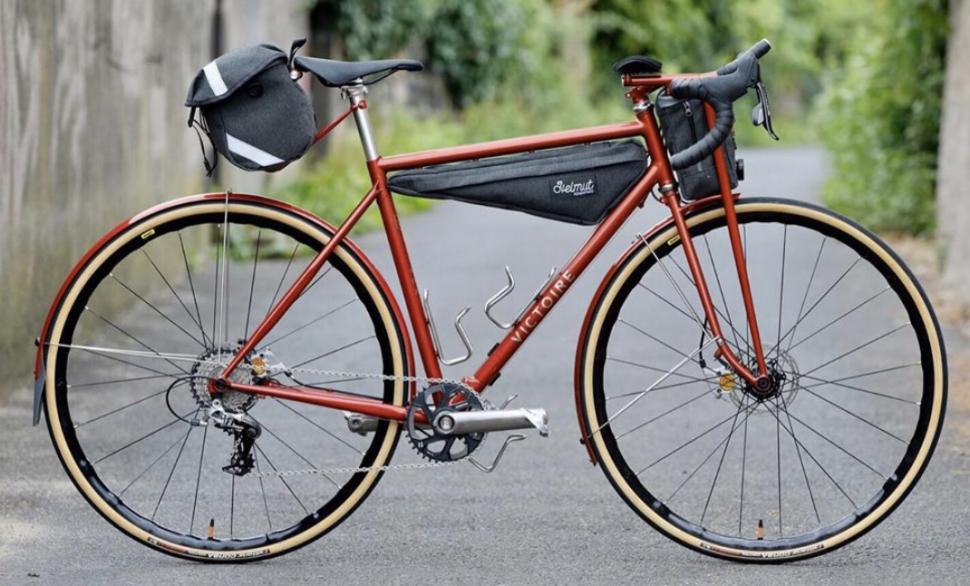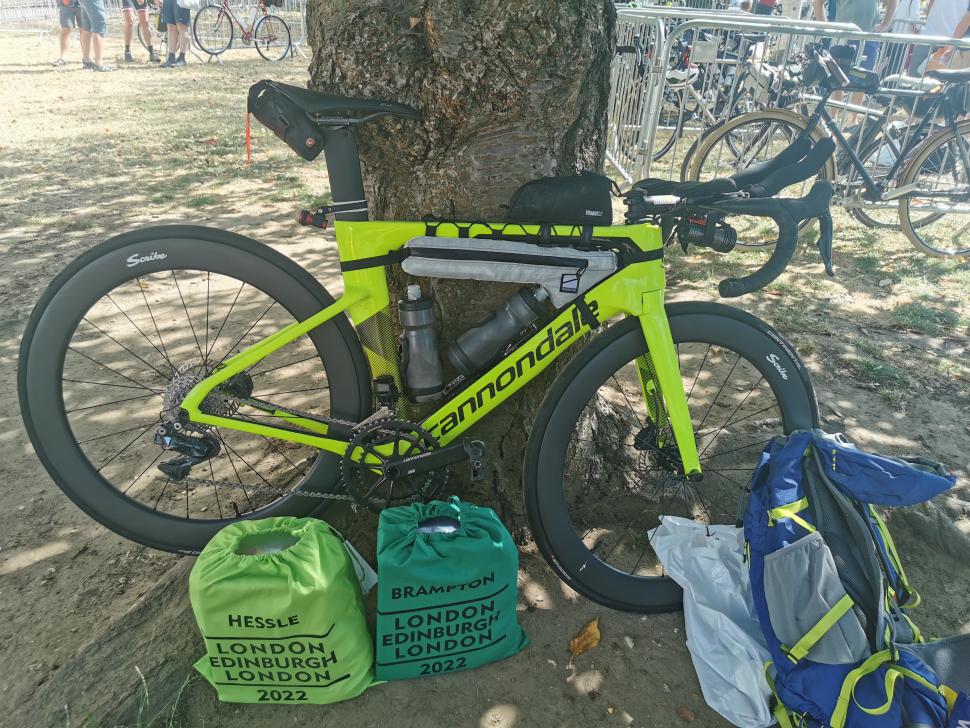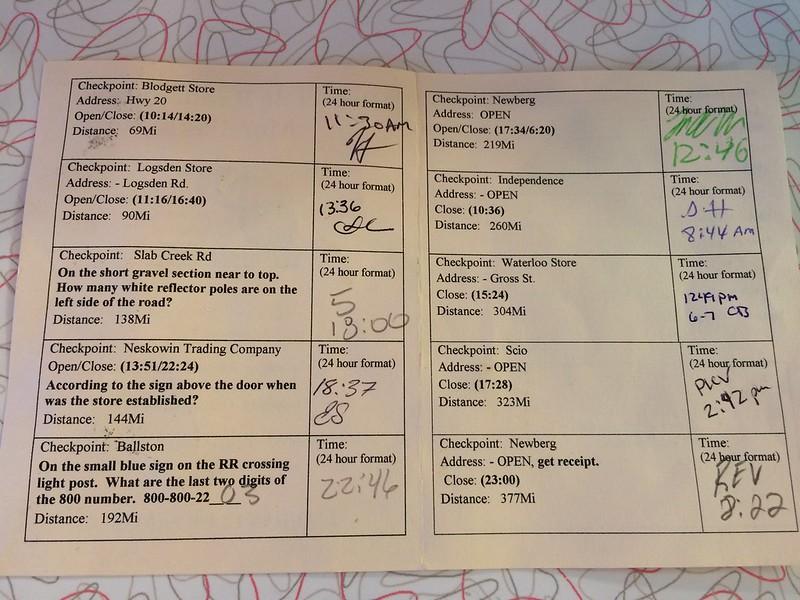- News
- Reviews
- Bikes
- Accessories
- Accessories - misc
- Computer mounts
- Bags
- Bar ends
- Bike bags & cases
- Bottle cages
- Bottles
- Cameras
- Car racks
- Child seats
- Computers
- Glasses
- GPS units
- Helmets
- Lights - front
- Lights - rear
- Lights - sets
- Locks
- Mirrors
- Mudguards
- Racks
- Pumps & CO2 inflators
- Puncture kits
- Reflectives
- Smart watches
- Stands and racks
- Trailers
- Clothing
- Components
- Bar tape & grips
- Bottom brackets
- Brake & gear cables
- Brake & STI levers
- Brake pads & spares
- Brakes
- Cassettes & freewheels
- Chains
- Chainsets & chainrings
- Derailleurs - front
- Derailleurs - rear
- Forks
- Gear levers & shifters
- Groupsets
- Handlebars & extensions
- Headsets
- Hubs
- Inner tubes
- Pedals
- Quick releases & skewers
- Saddles
- Seatposts
- Stems
- Wheels
- Tyres
- Health, fitness and nutrition
- Tools and workshop
- Miscellaneous
- Cross country mountain bikes
- Tubeless valves
- Buyers Guides
- Features
- Forum
- Recommends
- Podcast
OPINION
The very long road to Paris — just getting to the start line of the legendary Paris–Brest–Paris bike ride is a journey in itself
 Paris–Brest–Paris 2019 (Lesli Larson on Flickr Creative Commons, public domain)
Paris–Brest–Paris 2019 (Lesli Larson on Flickr Creative Commons, public domain)The world of Audax riding and randonneuring is one of the most open and popular styles of riding in the country, with roots back to when cycling first started. It also conjures a certain image for some, of a stereotypical rider and style of bike, that isn’t true in my experience. Or at least, it doesn’t tell the full story.
Audax and randonneuring events are a test of endurance, tenacity and reliability, usually held over distances from 100km to 600km. There are also a few longer challenges with some commanding worldwide fame and notoriety, including Paris–Brest–Paris and London–Edinburgh–London.
These events are not races, not sportives, and not tours. Solo riders are expected to be self-sufficient, and there is usually little or no support provided. A route is provided often with a GPX file (an upgrade to a simple route card as it was in the past) and there are set points that riders need to visit. Each checkpoint needs to be recorded on the Brevet card provided to prove you have visited. Checkpoints can be manned, or often it might be somewhere you can get a receipt from a shop, or even a question to answer.
Paris-Brest-Paris (often shortened to PBP) is the largest and most famous audax event in the world. It’s held every 4 years, and attracts around 8,000 cyclists. Riders aim to complete the 1,200km (745 mile) route that starts in the town of Rambouillet on the outskirts of southwest Paris, heading to the coastal port city of Brest in Brittany, and back again. First held in 1891 as a race (the last ‘race’ edition of PBP was back in 1951) the event pre-dates the Tour de France, and it was once the longest stage race.
My first experience of audax riding is a memorable one, as a relatively new 16-year-old cyclist taking part in a 100 kilometre event on local roads. Starting with a little too much enthusiasm, hitting the wall before halfway and not taking anywhere near enough clothes, I vividly remember finishing with an uncontrollable shiver and heading home to a hot bath.
Fast forward just over 20 years and that was clearly not enough to put me off. In just a few days, at 4pm on Sunday August 20th, I will be riding out and aiming to complete the 1,200km PBP route.
For most who enter, the aim is simply to finish within the time limits, based upon average speed. Tackling the event is of course a challenge, but for PBP just getting to the start line has been long and complicated for me as a first-time attendee.
For those unfamiliar with PBP, you can’t just enter and turn up on the start line in Ramboulliet. There’s a qualification process required where you complete minimum distance events within a set period, but even these qualification rides are not the starting point of the journey. Step 1 is to pre-register, and the date in which you can pre-enter online will depend on the longest distance event certified by the BRM (Brevet de Randonneurs Mondiaux) you have completed in the previous year and a bit. For me, completing the 1500km London–Edinburgh–London event in 2022 meant I was able to pre-register at the earliest point in January 2023. The shorter the event completed, the longer you must wait to pre-enter, and it means the event may sell out before having the chance, or less choice on which start group you will be in.
After jumping over the pre-registration hurdle, PBP hopefuls must then complete certified BRM distance events within set calendar dates. We are fortunate in the UK that with such a demand from riders wishing to take part, many clubs and individual organisers arrange BRM-certified qualification events. The distance and dates for 2023 were as follows:
200 kilometre – to be completed between January 7 - April 30
300 kilometre – to be completed between March 11 - May 21
400 kilometre – to be completed between April 9 - June 10
600 kilometre – to be completed between May 6 - June 24
This process of qualification rides is to ensure that those wishing to take part have demonstrated a level of capability that shows they can complete the event. For me it has meant a significant time commitment, and this was made worse after my first 600km ended early with injury problems.
While I am sure some people will disagree, I believe riders who have completed any 1000km+ event in the previous year should have automatic qualification. Personal niggles aside, with the qualifications completed in May, I was then able to enter and take my place in the very first start group.
Hurdles completed, and time to start planning!
During Paris–Brest–Paris, I will need to follow the specified route and ensure my brevet card is stamped at 14 checkpoints, plus another ‘secret’ checkpoint put in place to ensure riders are following the exact route. Each checkpoint needs to be completed within a set time, so there is no option to start easy and push on later. I have put myself in the 80-hour group, and this will mean maintaining a minimum of 18.7kph (11.6 mph) for the full distance. There are other group options, with 84-hour and 90-hour maximum time limits.
Audax and randonneuring events may not be races, but there is still an element of competition, even if it’s just with yourself to get inside the time limit. I am sure every rider will have a goal to achieve, and this can often be used as a big motivator to keep yourself going. With no previous experience of the route, areas to be ridden or what to expect at the checkpoints, I need to be realistic but also set a goal time that will keep me motivated to push on. For now, I’ll keep that time to myself. As the final days tick by, the road to Paris is very nearly here. Then it’s just the case of making a quick visit to Brest, and riding all the way back.
Tracking is available during the event here, which should show when riders have passed through each checkpoint rather than a GPS ‘dot-watcher’ tracking page.
Matt is an endurance nut who loves big rides and big events. He's a former full-time racer and 24hr event specialist, but now is also happy riding off-road on gravel bikes or XC mountain bikes and exploring the mountains and hills of Mid Wales.
More Opinion
Latest Comments
- dh700 2 sec ago
It's going to be a long, long time before the world starts running out of steel-framed bikes of any description. I pick up one or two a year for...
- Zebulebu 2 hours 35 min ago
You can't enter BC races because you don't have a BC license?...
- LookAhead 34 min 19 sec ago
I didn't take him to be calling this particular incident a mere encounter but rather to be using "encounters" to mean "opportunities for violent...
- Rendel Harris 5 hours 25 min ago
Come on guys, appreciate all the entertainment you provide and discussion you provoke but really, two seconds just skimming your articles for...
- chrisonabike 7 hours 1 min ago
Councils don't seem terrible keen ... maybe eburtthebike can give us the insider view in why not?...
- Hirsute 10 hours 19 min ago
Another pathetic sentence for killing a cyclist....
- Surreyrider 10 hours 39 min ago
You sound like the PR for hookless wheels. ...
- HoarseMann 11 hours 37 min ago
...and maybe a third? Don't forget the M49 'ghost' junction: https://www.bristolpost.co.uk/news/bristol-news/work-m49-ghost-junction-...
- ubercurmudgeon 14 hours 2 min ago
What a shit world we've created.





Add new comment
8 comments
Sadly it looks like Matt didnt start PBP (based on the official tracker), and this article seems hidden on the main site now - shame
My thoughts go out to him.
Likewise - that must be gutting after the lengthy prep that goes into it.
The lure of long distance riding is very appealling.. however the PBP qualifing chap (hero) I know has been audaxing for a few years now, some of the prep and qualifying rides he tells me about sound frankly horrendous and seem to often include hiding in bus shelters, sleeping on the floor and freezing temperatures.
I know there's plenty of them around, but I'd love to read a ride report afterwards, Matt. Good luck!
Off topic - chap with a baguette in his pocket - why is the Rapha logo upside down?
I'd love to do this next time, but the closest sanctioned audax events near me are at least a three hour drive. That's a lot of extra time and cost commitment on top of the riding. I wish I had the energy to start my own club locally.
A good advert for the event, actually makes the whole process sound quite attractive!
The combination of a renewed focus on Z2 training (otherwise known as 'learning a sensible pace' 😎) and riding with a 300km Audaxer has got me more interested.
Do you need to do a lot of dedicated core and strength work to ensure those sorts of distances? (as in, more than we should all be doing anyway?)
As someone off to PBP tomorrow, I'd say probably people should, yes, but I don't know anyone who does! Main things for me are getting frame/bike fit right, and, er, riding your bike lots to prevent neck and contact point issues.
Core work is important, as you will be in a static position for a long period.
Neck problems are the biggest worry, and exercises to strengthen the neck would be wise. Sherman's neck is something riders can get during these long events.